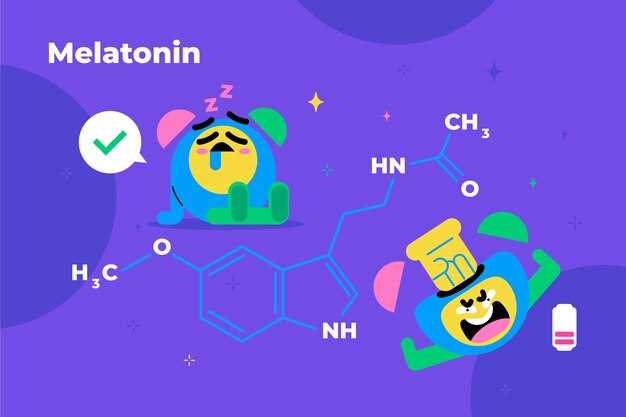
Exploring the Intricacies of Venlafaxine Transformation

The intricate processes that occur within our bodies can often be as mysterious as they are fascinating. One such captivating phenomenon revolves around the metabolic pathways of a powerful substance, which has garnered significant attention in recent years. By delving into the world of venlafaxine metabolism, we can gain valuable insights into the transformations and chemical reactions that shape its effects.
An Orchestra of Enzymes: Key Players in Venlafaxine Metabolism
In the symphony that is venlafaxine metabolism, a variety of enzymes take on crucial roles, orchestrating the entire transformation process. These enzymes, including cytochrome P450, flavin-containing monooxygenase, and UDP-glucuronosyltransferase, work in harmony to catalyze different reactions and produce metabolites with distinct characteristics.
Beyond the Body’s Borders: Exploring Venlafaxine in the World of Drug-Drug Interactions
Understanding venlafaxine metabolism goes beyond the realm of insightful science; it has practical implications in the field of pharmacology. The intricate interplay between venlafaxine and other drugs ultimately impacts its efficacy and potential side effects. By exploring the details of drug-drug interactions, healthcare professionals can optimize treatment plans and ensure patient safety.
Patheay to Potential: The Influence of Venlafaxine Metabolism on Therapeutic Outcomes
The path that venlafaxine takes within the body directly influences its potential for therapeutic success. Metabolism not only determines the duration and intensity of action but also showcases the development of active metabolites that contribute to treatment efficacy. By comprehending these intricate pathways, clinicians can tailor dosages and enhance the overall effectiveness of venlafaxine-based treatments.
- A Promising Future: As researchers continue to unravel the complexities of venlafaxine metabolism, its potential applications in personalized medicine and drug development are becoming increasingly apparent.
- Bridging the Gap: Through ongoing studies and collaborative efforts, the gap between understanding the fundamentals of venlafaxine metabolism and clinical practice is gradually closing, allowing for better-informed decisions and improved patient care.
Embracing the wonders of venlafaxine metabolism opens the door to a deeper understanding of how our bodies interact with powerful substances. By unraveling its intricacies, healthcare professionals and researchers can enhance therapeutic approaches and pave the way for advancements in the field of pharmacology.
Clinical considerations for optimizing Venlafaxine therapy

When it comes to maximizing the effectiveness of Venlafaxine treatment, there are several important factors to consider. Understanding how the body processes the medication and incorporating clinical strategies can significantly improve therapy outcomes.
1. Individual Variations: Everyone metabolizes medications differently, and Venlafaxine is no exception. Genetic factors, age, and overall health can influence the rate at which the drug is broken down and eliminated from the body. It is crucial for healthcare professionals to consider these variations when prescribing Venlafaxine to ensure personalized and optimal treatment.
2. Dosing Regimen: The dosage and schedule of Venlafaxine intake can impact its effectiveness. Finding the right balance between an initial therapeutic dose and potential dosage adjustments is vital. Close monitoring of patients’ response to treatment will help determine the most suitable dose for each individual.
3. Adherence and Compliance: Strict adherence to the prescribed Venlafaxine regimen is crucial for maximizing its therapeutic benefits. Patients should be informed about the importance of taking the medication as directed and the potential consequences of missed doses. Encouraging regular communication between patients and healthcare providers can help address any concerns or difficulties encountered during treatment.
4. Comorbidities and Medication Interactions: Patients with pre-existing medical conditions or those taking other medications may require special consideration when prescribing Venlafaxine. Healthcare professionals should be aware of potential interactions between Venlafaxine and other drugs, as well as the impact of comorbidities on therapy outcomes. Close monitoring and regular evaluation of patients’ overall health status is crucial for optimizing Venlafaxine therapy.
- 5. Counseling and Support: Psychological support and counseling play a significant role in optimizing Venlafaxine therapy. Engaging in therapy sessions can help patients cope with any emotional or psychological side effects of the medication and improve treatment adherence.
- 6. Ongoing Monitoring and Adjustments: Regular monitoring of patients’ response to Venlafaxine therapy is essential. Periodic evaluations, such as assessing symptom improvement or side effects, can help identify the need for dosage adjustments or alternative treatment options.
- 7. Patient Education: Educating patients about Venlafaxine therapy is crucial in promoting active engagement in their own treatment. Providing information about possible side effects, anticipated benefits, and the importance of following the prescribed regimen can empower patients to make informed decisions and actively participate in their treatment journey.
By considering these clinical factors and implementing personalized approaches, healthcare providers can optimize Venlafaxine therapy to ensure the best possible outcomes for their patients.
